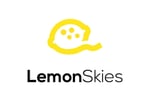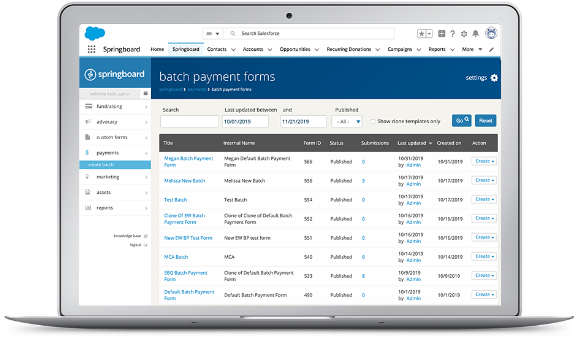Marketing Automation: How to Avoid the Rabbit Hole

 This is a guest post by our smart friend Olga Moshinsky Woltman of LemonSkies.
This is a guest post by our smart friend Olga Moshinsky Woltman of LemonSkies.
About 307,000,000. That is the number of search results Google spits out in response to “marketing automation.” I am not going to undertake the gargantuan task of distilling all this information into a scannable read. Instead, I will share a few of the topics and considerations, far from comprehensive given the vastness of the subject, to begin thinking about your marketing automation.
First, I am going to take a didactic (and mercifully brief) detour to get us on the same page about definitions. Customer journeys are often lumped in with marketing automation, but it’s important to decouple the two concepts. Marketing automation is just what it sounds like: technology that automates marketing touch points and workflows. The concept of customer journeys offers a broader view of the customer experience that both encompasses the outside world and identifies pain points – and points of potential impact. Beyond marketing efforts and interaction with your business or mission, thinking about journeys allows you to consider how supporters feel and what external factors may be impacting them.
Marketing automation buzz has been around long enough that this idea has been accepted as a good thing. The post-automation world allows you to show your audiences you know and understand them; serve up more effective and personalized messaging; deepen engagement; and also realize efficiencies. But saying that “everybody is doing it” is not really accurate. This nifty study finds that two thirds of organizations are automating, including customer experience professionals worldwide, from hospitality to telecoms. (If you can help me chase down a legit number for how many nonprofit organizations engage in automation, I’ll buy you ice cream).
Marketing automation is a nonstarter without a solid and well-considered strategy and plan. Asking “what email are we sending?” is the wrong question. A more effective approach is multi-dimensional, considering goals and desired outcomes (the WHY), audience or audience segments and their most meaningful differentiating factors (the WHO), timing and cadence (the WHEN), channels (the WHERE), implementation and measuring impact (the HOW), and of course the messaging (the WHAT).
Now how does one get this beast forward-thinking marketing effort off the ground?
- The search for perfection often stands in the way of progress. But do you really have to wait to map out every component of the program (read: many stakeholders) or delay launch by months because the super-amazing video series are coming? Your program will not achieve its full potential on the first go. These things are necessarily iterative. You just have to begin somewhere to get things off the ground. Ask yourself: What’s a small manageable piece of the puzzle that can be tackled as a proof of concept?
- If you were in charge of Hogwarts’ alumni program, your (owl) segmentation would likely split out Hufflepuffs and Slytherins. Can you define the biggest most meaningful audiences based on your business objectives and unique organizational factors? In creating segments and conditional content, there are infinite permutations with ever-increasing complexity and ever-decreasing audience size, so it’s important to strike a balance to provide the most relevant message with the least amount of overcomplication. What are your key tribes? Are they based on the donor’s life-cycle? Affinity for specific areas of your mission? Source or channel of acquisition? Are these definitions dynamic depending on the marketing program, or are they always static?
- Sometimes we spend so much time aligning channels and messages that we forget to ask ourselves if the channels and communications can also stand alone. Not everyone is reachable via every medium. Even if they are, you may still be lost in the shuffle or, gasp, ignored. Does your strategy make sense if someone only has partial exposure to it?
- Look out for blind spots like data limitations: Is there a pocket of information that’s not considered? Sending an uninformed message is far worse than a generic but inoffensive message. Before triggering donor reactivation series with “we haven’t heard from you in a while” messaging, think if there are any databases with relevant giving data that are not considered (I’m looking at you, peer-to-peer events). Similarly, how we interpret the information we do have is very important, so that we do not make the wrong assumptions based on a single data point or behavior, taking communications in a direction that strays away from audiences’ actual beliefs, perceptions, or needs. Clicking on a picture of a cat doesn’t make me a ‘cat mom’; downloading symptoms checklists doesn’t tell you if I am concerned about my health or the health of a loved one; don’t assume I am a teenager based on my Spotify selections. You get the idea.
- Plan ahead and set realistic expectations. In helping nonprofits advocate for automation tools, I’ve heard the argument “it will save us time,” but that’s not really accurate: You won’t really spend less time. You will accomplish far more, but automation is also more complex and laborious to manage and maintain. Nor is it a “set it and forget it” situation – an effective program is dynamic and will require updates and refinements.
There is so much to unpack with this topic, so we will likely continue to return to this subject for some time to come.
What’s keeping you up at night about this one? Jot us a note via email or LinkedIn.

